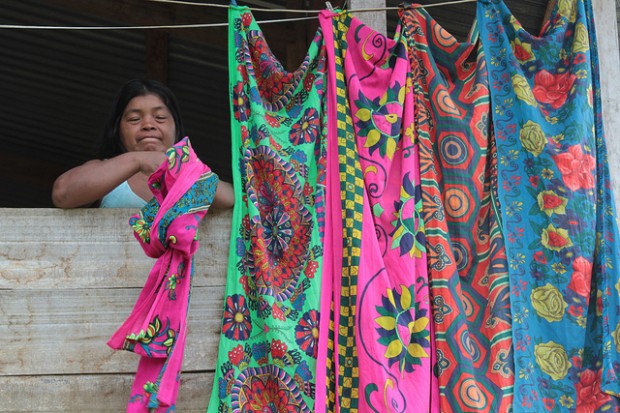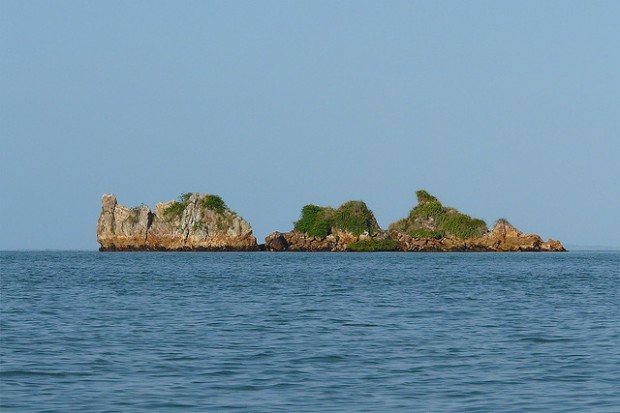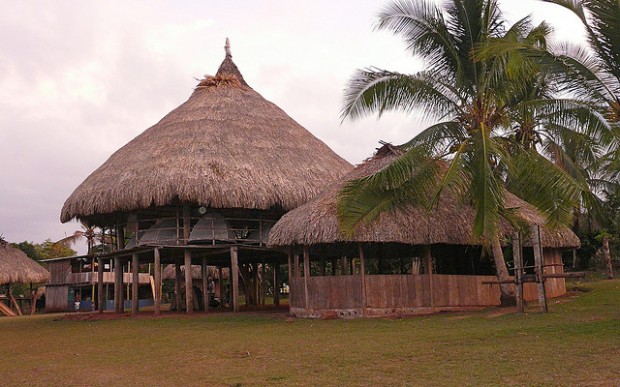
Photo Credit: Acnur Las Americas
When it comes to exploring Central America, Panama’s Darien province marks the end of the road for most travelers. Located on Panama’s eastern border, it contains the area known as El Tapon (meaning “The Plug”). This 99 mile stretch through the swamplands and rainforests along the Panama-Colombia border accounts for the only unfinished stretch of the Pan-American highway, which stretches all the way from Alaska to Argentina.
Often heralded as Central America’s own Bermuda Triangle, the Darien is regarded by many as Panama’s last true frontier. As the country’s least populated and least tame province, it’s easy to see why it has begun to attract a few of the area’s more adventurous travelers. While not easy to reach, its ecological and cultural attractions are easily worth the extra effort and associated risks.
Due to its topography, and the fact that the road literally ends in Yaviza, much of the Darien province is accessible only by plane or boat. A 45-minute flight from the nation’s capital will land you in La Palma, the capital of the province. Flights are also available via AirPanama to Garachine or Sambu. A few villages, such as La Chunga and Villa-Grecia are accessible by way of the Rio Sambu. However, the majority of the area is often most easily navigated on foot or by hollowed-out canoe. And, while a few hotels exist, lodging in clean but rustic huts or even in tents is much more common.
Comprising much of the Darien province is Darien National Park, Panama’s largest. The park contains habitats from sandy beaches to rocky coasts to mangroves to rain forests. And not the kind of rain forests that have clearly marked trails and snowcone stands. The forests of the Darien still remain largely untouched by civilization and were named a natural World Heritage Site by UNESCO in 1981. The area is home to four species of macaw, the rare Harpy eagle, tapirs, several endangered species of monkeys, and a host of other remarkable animals.
Also among the undisturbed features of the Darien province are the people themselves. The Embera-Wounaan live along the riverbanks in villages containing no more than 5 to 20 houses, which are elevated structures with no walls. Unless they are in town men generally wear no more than a loin cloth, and women only a skirt. Children wear no clothes until puberty, and everyone is barefoot. Their bodies are painted with a black dye made from berries that is thought to repel insects. On special occasions, this dye is also used to paint geometric patterns on their bodies.

Photo Credit: Rita Willart
The Darien’s other inhabitants consist mainly of outlaws. What was once a subculture of pirates and run-away slaves is now a network of Revolutionary Armed Forces of Columbia (FARC) guerillas, who use the area for buying and stowing firearms, and the United Self-Defense Forces (known as paramilitaries) who oppose them. These groups, combined with poachers and drug traffickers, make much of the area unsafe for travel. The good news is that many tourist sights are only accessible by plane and, consequently, unreachable by those who might wish harm.
Many opportunities are available for adventurers who wish to spend their vacation just a little further off the grid. The Punta Patino Nature Reserve offers options for exploring, hiking, boating, and bird watching. No bucket list is complete without a stay at Pinas Bay’s Tropic Star Lodge, which is considered by some to be the best fishing resort in the world. With an abundance of marlin, sailfish, tuna, grouper, and many more, the resort has served as the backdrop for over 300 world records. Nearby Biroquera offers visitors the opportunity to intermingle with local tribespeople and experience their crafts, native dances, and more. Guided hiking tours abound throughout the area.

Photo Credit: Rita Willart
Although much of the Darien is regarded as safe, exploring its depths is not for the faint of heart. Many deadly species, including crocodiles, boa constrictors, jaguars, and wild boar, lurk in its midst. As do poachers, of both plants and animals, who would kill to protect their livelihood. These same predators that pose a threat to tourists also threaten the sustainability of the ecosystem itself. This is due largely in part to the guerillas and paramilitaries that make the area too dangerous to patrol. The government and conservation organizations simply lack the resources and protection they need to do their jobs.
Also a concern for the area is the frequent mention of bridging the Pan-American Highway gap, which would undermine the subsistence of native cultures and habitats. As the Darien is threatened, so is Panama’s border and, ultimately, the rest of the Americas. Since the region has always served as a natural barrier between Panama and its South American neighbors, the country and the rest of Central and North America have remained safe from dangers such as foot and mouth disease which is currently isolated to South America alone. While conservation and law enforcement efforts are continuously improving, the fact remains that Panama’s last frontier may be slowly slipping away.
Don’t miss out on all it has to offer.

FATCA, or the Foreign Account Tax Compliance Act, was enacted in 2010 and has been in effect since January 2013. This Act was passed with
Welcome to WordPress. This is your first post. Edit or delete it, then start blogging!

Are you a high roller home owner or a jet setter? Maybe you’re a bit of both! Check out our infographic and decide What kind